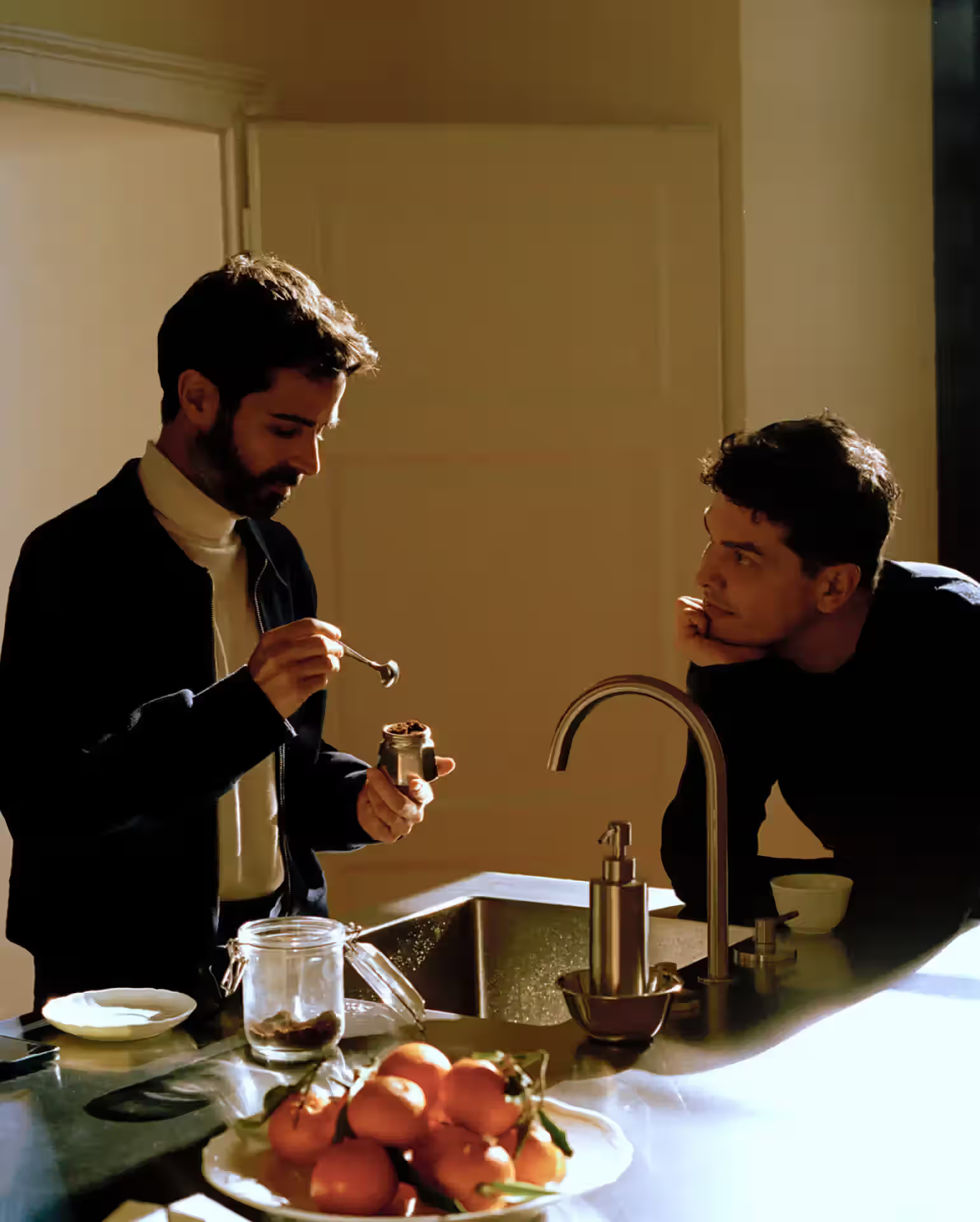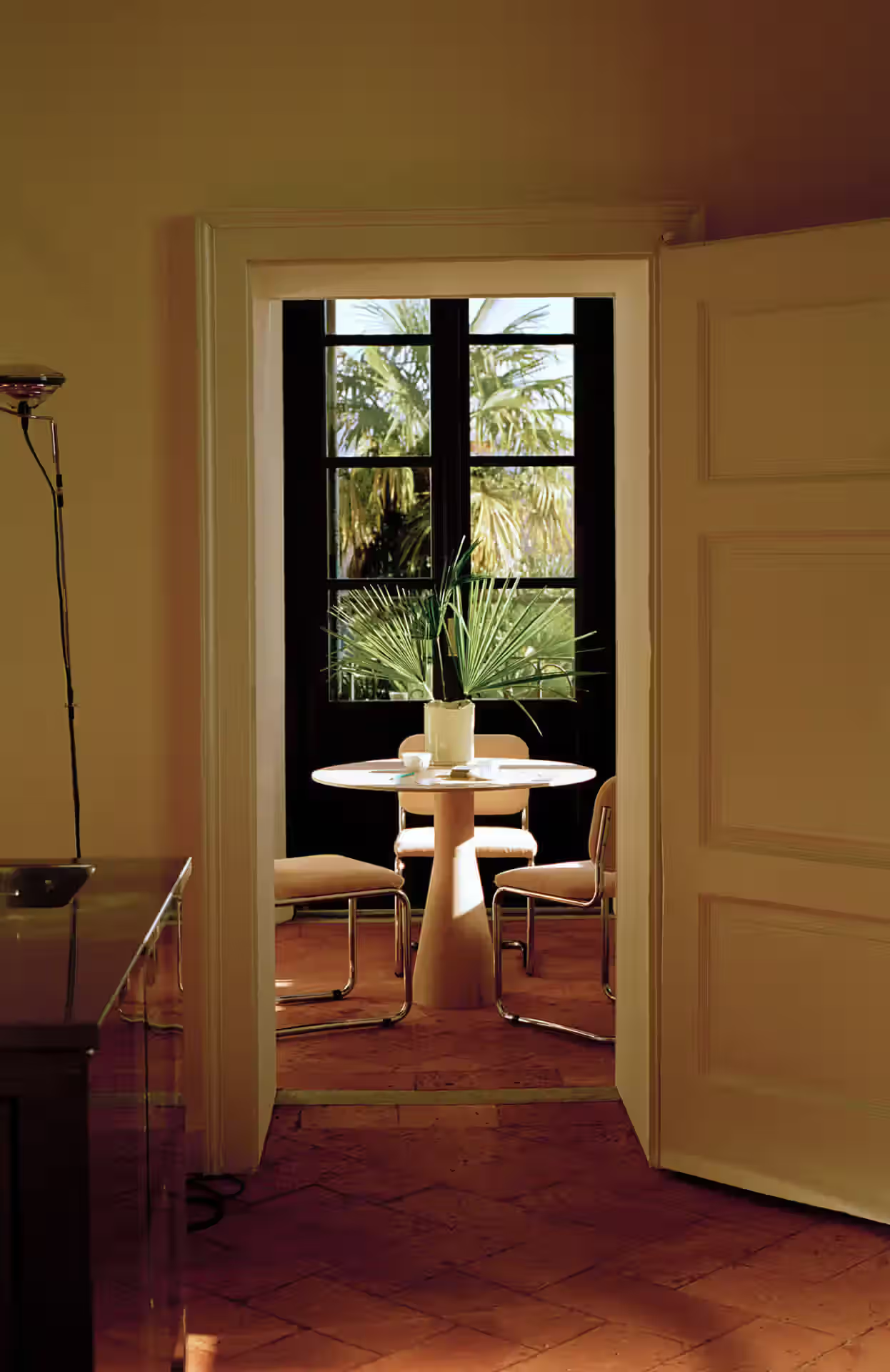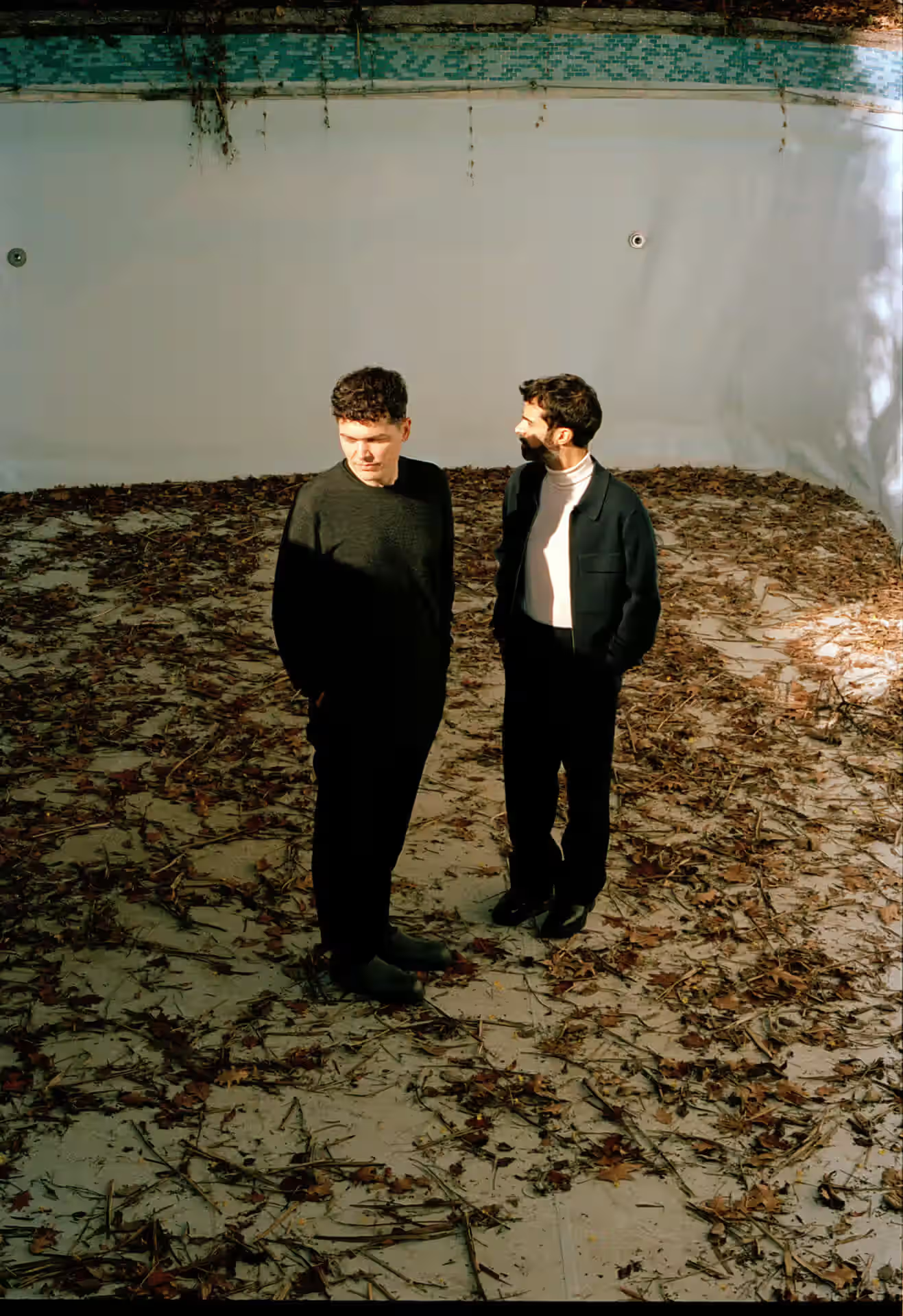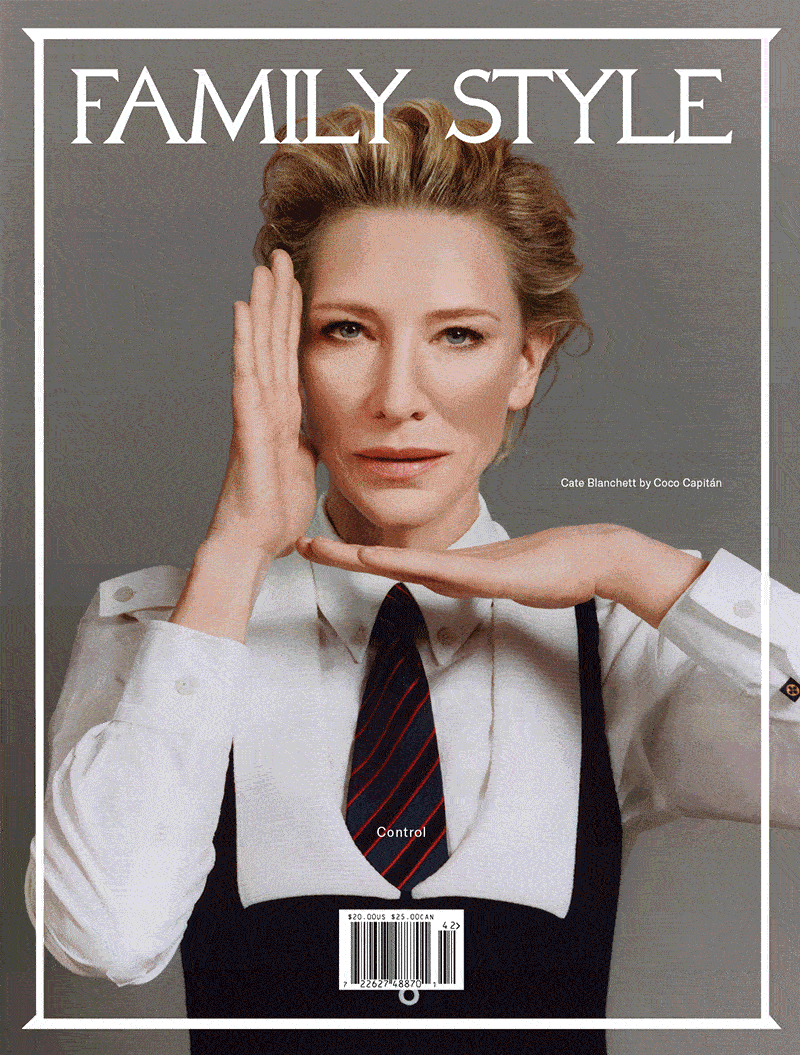Lake Maggiore, an hour or so north of Milan, sits within the foothills of the Italian Alps. Quaint medieval villages sliced up by cobblestone streets dot its banks and in the center float minuscule islands adorned with Renaissance villas. It’s a popular weekend destination in the summertime when Italian families and visiting tourists flock to its rocky shores to dip in the cool mountain water. In the summer of 2022, Andrea Trimarchi and Simone Farresin, the Italian couple behind the design studio Formafantasma, had recently moved to Milan and were exploring the area on a rare weekend off. Both had grown up in Italy—Trimarchi in Sicily, and Farresin in Veneto—but neither had ever lived in the northern city. So, like any recent transplants might, they were roaming around their new locale and daydreaming about real estate.
“We were enjoying the lake and swimming,” remembers Trimarchi. “We completely fell in love with the area.” Browsing property online, they found something that instantly piqued their interest: a roughly 2,000-square-foot apartment in a centuries-old palazzo. The listing described it as a castle, with tall vaulted ceilings, cotto ceramic tile floors, and a continuous enfilade of rooms through which their Italian greyhound, Terra, could dart and weave. They went to see it and bought it soon after.
Farresin, dressed in black trousers and a crisp blue oversized Marni shirt—a version of the uniform the pair are often spotted in—is seated in a Marcel Breuer Cesca chair tucked into the couple’s kitchen table at their flat in Milan, a remarkably tailored space that plays on 1970s aesthetics just a short walk from the city’s central train station.
There are custom sofas rendered in warm, umbertoned wood and chartreuse carpeting in the living room. In the kitchen, swathes of volcanic ash-glazed tiling in a gradient of browns hail from Formafantasma’s ExCinere, a collaboration with experimental-materials brand Dzek. Farresin has just stepped off the train from Venice, where the pair recently took over creative direction for the historic Venetian textile brand Rubelli.
Known for their research-based approach, the duo lived in the Netherlands for 14 years as their design careers took off. After both graduating from the Design Academy Eindhoven in the class of 2009, they founded Formafantasma out of Amsterdam and quickly became two of the most sought-after figures in contemporary design. Past projects include Ore Streams, a collection of furniture made from recycled tech parts as well as an installation at the Triennale di Milano design museum, and innovative products for brands like Bitossi, Flos, and Vitra. In 2021, they were ready for a change. “We had been living in the Netherlands for a very long time,” Farresin explains. “It was an important place to establish our studio, but at some point we realized that we didn’t want to stay there for life—it wasn’t our place.”
Trimarchi and Farresin’s move to Italy brought on an explosion of new projects. In the past several years, the designers have explored sustainable upholstery with the furniture brand Tacchini, which extended Formafantasma’s research into the history and ecology of wool production that informed their 2023 National Museum of Oslo
exhibition, “Oltre Terra.” They have worked as consultants on sustainable practices, product and packaging design, and cultural initiatives for fashion brands like Prada, Jil Sander, and Loro Piana. And they have designed exhibitions for venerable institutions like the Venice Biennale and Salone del Mobile.
The Italian relocation also ushered in a new sense of introspection. The next phase in Formafantasma’s career will look inward toward the domestic, a radical departure from the studio’s rigorous academic work and its most personal to date. “It has to do with what’s happened in our life in recent years,” Farresin says, referring to the reprioritization of family and private life that has come with their return. “You grow up with an idea of domesticity that makes you happy: ugly objects, handmade things, cushions with embroidery. I remember loving the kind of decoration that was supposedly kitsch. When you start studying design, you learn what is ‘right’ and ‘wrong.’ You have these two different worlds, and they never come together ... This work is about that.” Trimarchi adds, “In a way, it’s looking back to our origin of being designers.”
This new area of interest has resulted in an exhibition at ICA Milano titled “La Casa Dentro,” which is on view through July 19th and features a new collection of furniture that plays with these prevailing notions of taste. “We started reflecting on Modernism and what it taught us about aesthetics,” Farresin says. “But also how it became a dogma. We went back to the writing of Le Corbusier and Adolf Loos and realized there were clear accusations of femininity: Everything to do with the family was irrational, whereas intellect and rationality were masculine. It was extremely gendered.”
This collection of furniture toggles between objects that adhere to these Modernist ideals and softer, more decorative pieces that figures like Le Corbusier and
Loos certainly would have described, pejoratively, as feminine. “We start with a tubular bench that’s almost a cliche of Modernism. It’s an object that is very clinical, almost literal,” Farresin explains. These pieces then transition into the more decorative and ornate. “We decided to use much more gentle materials and techniques,” says
Trimarchi, referring to a wood stained with pastel colors and painted with flowers. In many ways, this is the first time the pair have allowed autobiography, however oblique, to emerge in their work; the exploration of this subject is inextricably tied up with their own queer identities. “I hope it will be read as emotional,” says Farresin. “It’s like accepting a form of romanticism—and even kindness. We don’t want it to come off as a post-Modernist pastiche.”
The pair also explored the home for the third edition of the Prada Frames symposium, organized in collaboration with the Milanese fashion house during Milan Design Week this April. The event was held in a 19th-century mansion and shifted between its rooms, calling into question the socio-cultural roles of each space. “In the kitchen, for instance, you addressed gender issues. In the bedroom, you discussed sexuality,” says Farresin. For the latter, they screened Isabella Rossellini’s “Green Porno,” the filmmaker’s series of short films on animal sexual behavior.
In each environment and across every object, it’s clear that spending time at their new home near Lake Maggiore has allowed both designers to reevaluate the past in a positive light. “Andrea and I grew up in small villages, and we really wanted to escape our provincial towns,” says Farresin. “But now, I really enjoy spending time in the village. I can have long walks in the fields. I feel more connected to my childhood.” These typically normal pleasures of domesticity are enticing, he admits: “We playcards. We cook much more. We go to the cinema, that’s something we never did before.”






_result_result.avif)

_result_result.avif)

_result_result.avif)



.avif)

